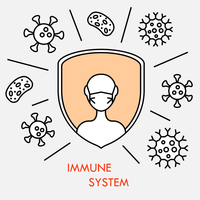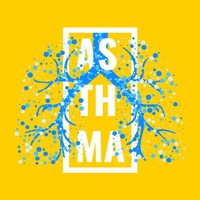
Studies are finding an association between lower vitamin D levels and high numbers of COVID-19 cases and mortality (1,2,3,4). Countries such as Italy and Spain, both of which are experiencing high COVID-19 mortality rates, have lower average vitamin D levels than most northern European countries.
While it is important to note that correlation does not necessarily mean causation, there is mounting evidence that vitamin D levels could affect immunity and infection outcomes. Several meta-analyses have concluded that vitamin D supplementation reduces the risk of respiratory tract infections in both children and adults (5,6,7,8,9).
Mechanisms of action
Vitamin D can reduce the risk of infection through several mechanisms including:
- Strengthening innate immunity by inducing peptides (including cathelicidins
 and defensins) that can lower viral replication rates (10).
and defensins) that can lower viral replication rates (10). - Affecting toll-like receptors, several of which affect or are affected by vitamin D receptor induction. The innate immune response relies on the toll-like receptors which recognise molecules related to pathogens. When activated they release cytokines and induce reactive oxygen species and antimicrobial peptides, cathelicidins
 and defensins (11).
and defensins (11). - Regulating production of specific antimicrobial proteins that directly kill pathogens, and thus are likely to help reduce infection, including in the lungs (12,13).
- Modulating adaptive immunity. Vitamin D3 suppresses responses mediated by the T helper cell type 1 (Th1), by primarily repressing production of inflammatory cytokines IL-2 and interferon gamma (10).
- Reducing concentrations of pro-inflammatory cytokines that are responsible for the inflammation that injures the lining of the lungs, leading to pneumonia (10).
- Increasing concentrations of anti-inflammatory cytokines (10).
- Boosting mucosal defences via its influence over several immune pathways (14,15).
Vitamin D deficiency is a risk factor for and/or a driver of the exaggerated and persistent inflammation that is a hallmark of acute respiratory distress syndrome (ARDS) (16,17) and has been associated with an increased risk of respiratory infections such as respiratory syncytial virus infection, tuberculosis and influenza (18,19).
A 2017 meta-analysis of RCT’s found vitamin D supplementation protected against acute respiratory tract infections, particularly in patients with very low (< 25 nmol/L) serum 25-hydroxyvitamin D concentrations (20).
Emerging evidence for vitamin D in response to Sars-CoV-2
- Vitamin D plays a role in the production of peptides in the respiratory epithelium which might mitigate the likelihood of developing COVID-19 symptoms (20).
- Vitamin D3 exerts pronounced impacts on the ACE2/Ang(1–7)/MasR axis with enhanced expression of ACE2 (21). ACE2 is the primary host cell receptor responsible for mediating infection by SARS-CoV-2.
- COVID-19 is caused, beside the virus virulence, by the release of pro-inflammatory cytokines. Vitamin D has been found to modulate macrophages’ response, preventing them from releasing excessive inflammatory cytokines and chemokines (22).
- Correction of vitamin D deficiency is thought to suppress CD26, a putative adhesion molecule for Covid-19 host cell invasion (21).
- Vitamin D may attenuate interferon gamma and interleukin-6 inflammatory responses, both potent predictors of poorer outcome in critically-ill ventilated patients including those with COVID-19 (21).
- In a cross-sectional analysis across Europe, COVID-19 mortality was significantly associated with vitamin D status in different populations (20).
- Vitamin D supplementation enhances the expression of genes related to antioxidation (glutathione reductase and glutamate-cysteine ligase modifier subunit). The increased glutathione production spares the use of ascorbic acid (vitamin C), which has antimicrobial activities (10).
- Case fatality rates increase with age and chronic disease morbidity, both associated with lower serum 25-hydroxyvitamin D concentration (10).
Vitamin D prescribing considerations
- To reduce the risk of respiratory infection, 10,000 IU daily of vitamin D3 for 2 weeks to rapidly raise serum 25-hydroxyvitamin D concentrations, followed by 5,000 IU daily. The goal is to raise serum 25-hydroxyvitamin D concentrations into the preferred range of 100 - 150 nmol/L. For treatment of people who become infected with COVID-19, higher vitamin D3 doses might be useful. Randomized controlled trials and large population studies should be conducted to evaluate these recommendations (10).
- When high doses of vitamin D are taken, high does calcium supplementation should be avoided to reduce risk of hypercalcemia (10).
- Some pharmaceutical drugs reduce serum 25-hydroxyvitamin D concentrations by activating the pregnane-X receptor. Such medications include anti-epileptics, anti-neoplastics, antibiotics, anti-inflammatory agents, antihypertensives, antiretrovirals, endocrine drugs, and some herbal medicines (10). Drug-herb interactions can be checked here.
- Magnesium supplementation is recommended when taking vitamin D supplements (10). Magnesium helps activate vitamin D. The RDI for magnesium is 250 - 500 mg daily. For more details, refer to Magnesium in Vitamin D Activation and Function.
Vitamin D sources
The main source of vitamin D for humans is from ultraviolet B (UVB) exposure which stimulates vitamin D3 synthesis in the skin from provitamin D3 (7-dehydrocholesterol). Exposure to sunlight increases synthesis of vit D in the skin. 5 - 10 minutes of exposure of the arms and legs to direct sunlight UVB radiation equates to approximately 3,000 IU of D3, depending on the time of day, season, latitude, skin sensitivity and pigmentation (23).
Dietary sources of vitamin D3 are predominantly animal-derived foods. Oily fish is the most important, non-fortified, food source (24).
Vitamin D2 is naturally found in very low concentrations in plant sources, for example, sun-exposed mushrooms (25,26). However, dietary intake is often insufficient to cope with seasonal deficits of sunlight exposures during winter (27).
Common Markers
Serum concentrations of total serum 25-hydroxyvitamin D3 (25(OH)D3) are routinely used in clinical practice to assess vitamin D status. 25(OH)D3 is the major circulating form of vitamin D, however, it is not the most active metabolite of vitamin D. Vitamin D assays do not distinguish between the three forms of vitamin D: DBP-bound, albumin-bound and free, biologically active vitamin D (28).
Cautions/Contraindications
Due to the limitations of measuring inactive vitamin D concentrations in serum, it is possible that a deficiency might be identified when no true deficiency exists. In this case, vitamin D supplementation could lead to vitamin D toxicity. Most of the symptoms of vitamin D toxicity are due to hypercalcemia, and early symptoms include gastrointestinal disorders such as anorexia, diarrhoea, constipation, nausea, and vomiting (29). High dose vitamin D supplementation needs to be administered with caution.
Take away on the effects of vitamin D on respiratory tract infections
Vitamin D deficiency is common and may contribute to increased risk of respiratory infection including COVID-19.
Vulnerable groups, for example those with diabetes mellitus or compromised immune function, those with darker skin, vegetarians and vegans, those who are overweight or obese, smokers and healthcare workers should consider vitamin D supplementation.
Before drawing conclusions, it is advisable that dedicated studies are undertaken looking at vitamin D levels in COVID-19 patients with different degrees of disease severity.
Currently, there is no specific research supporting the use of any supplement to protect against COVID-19.






